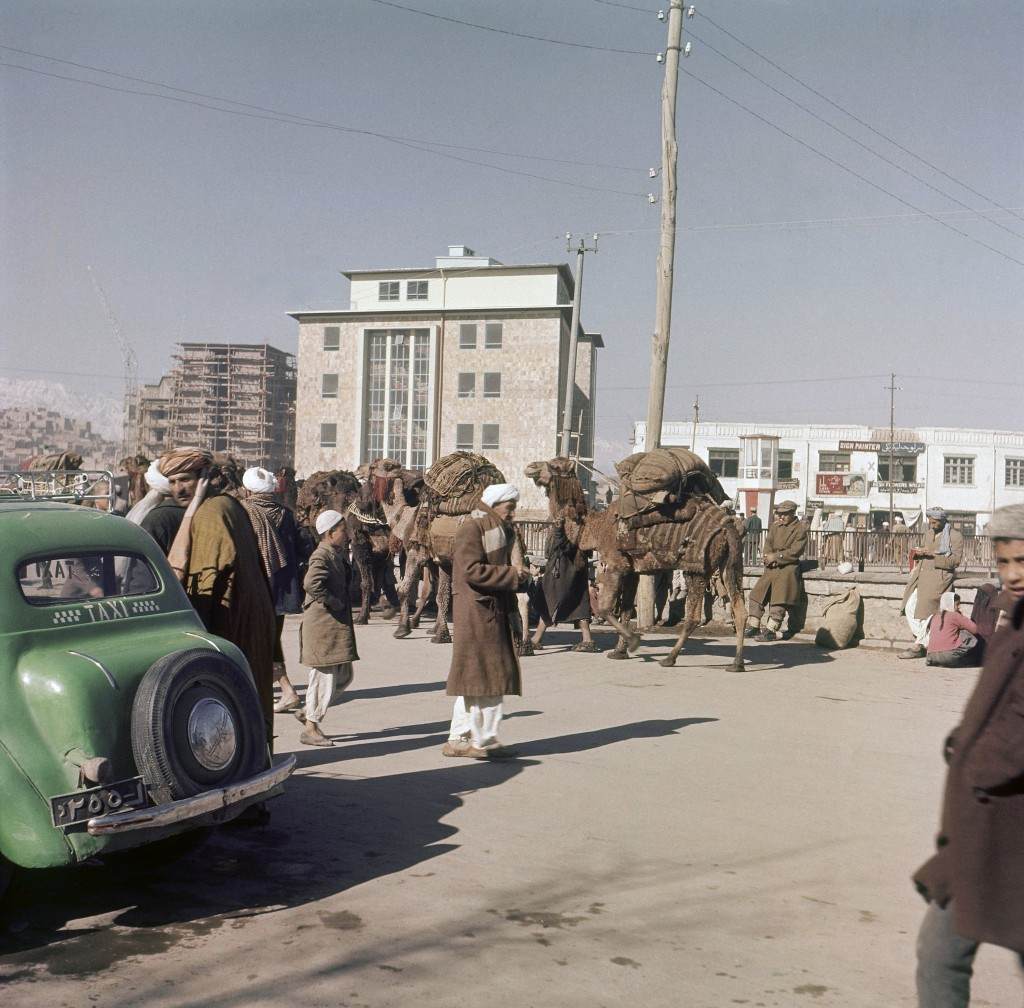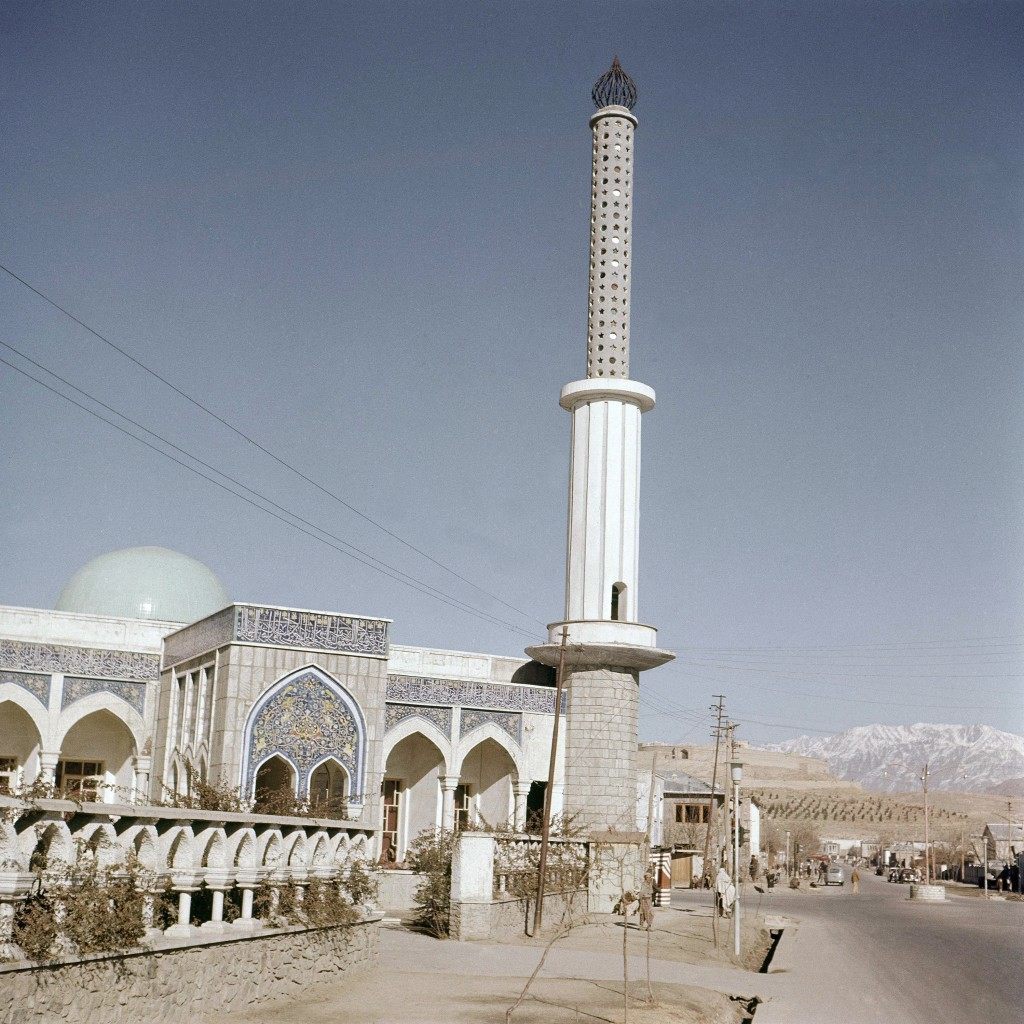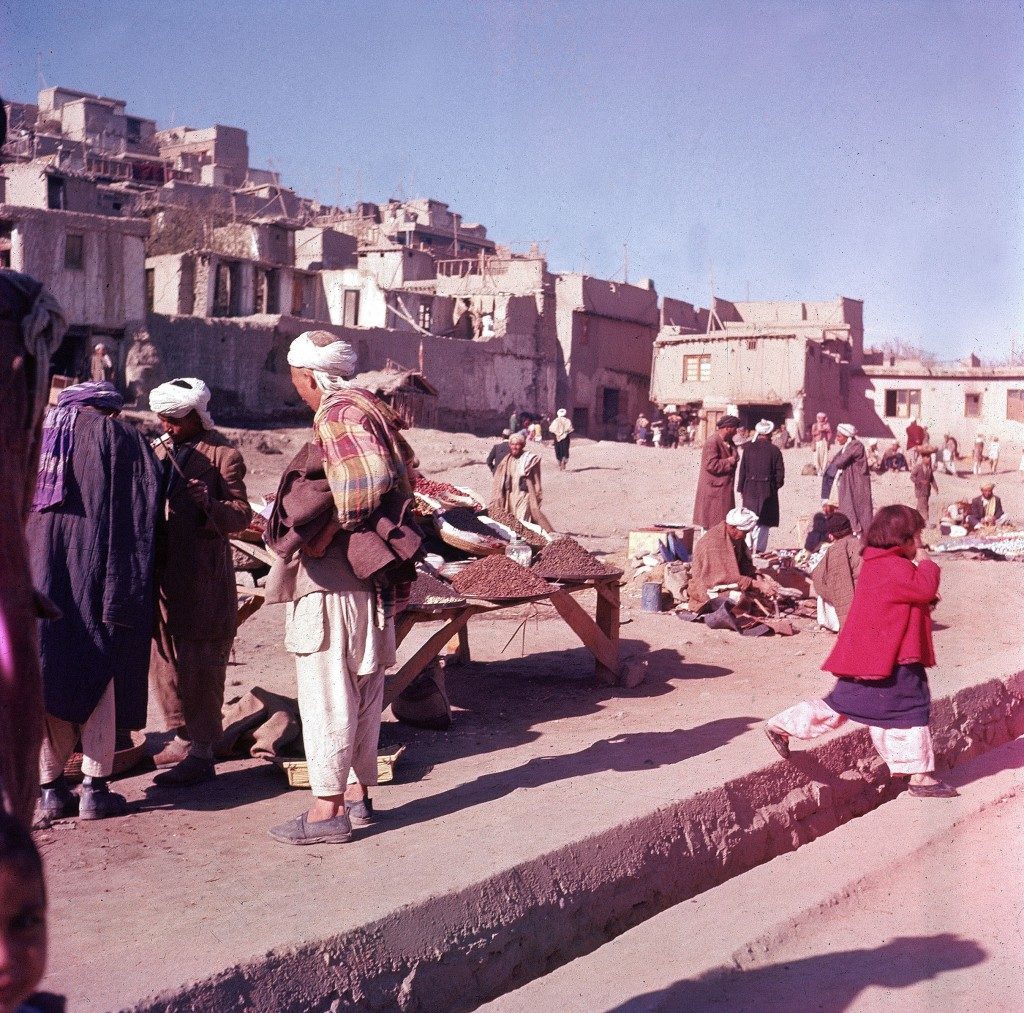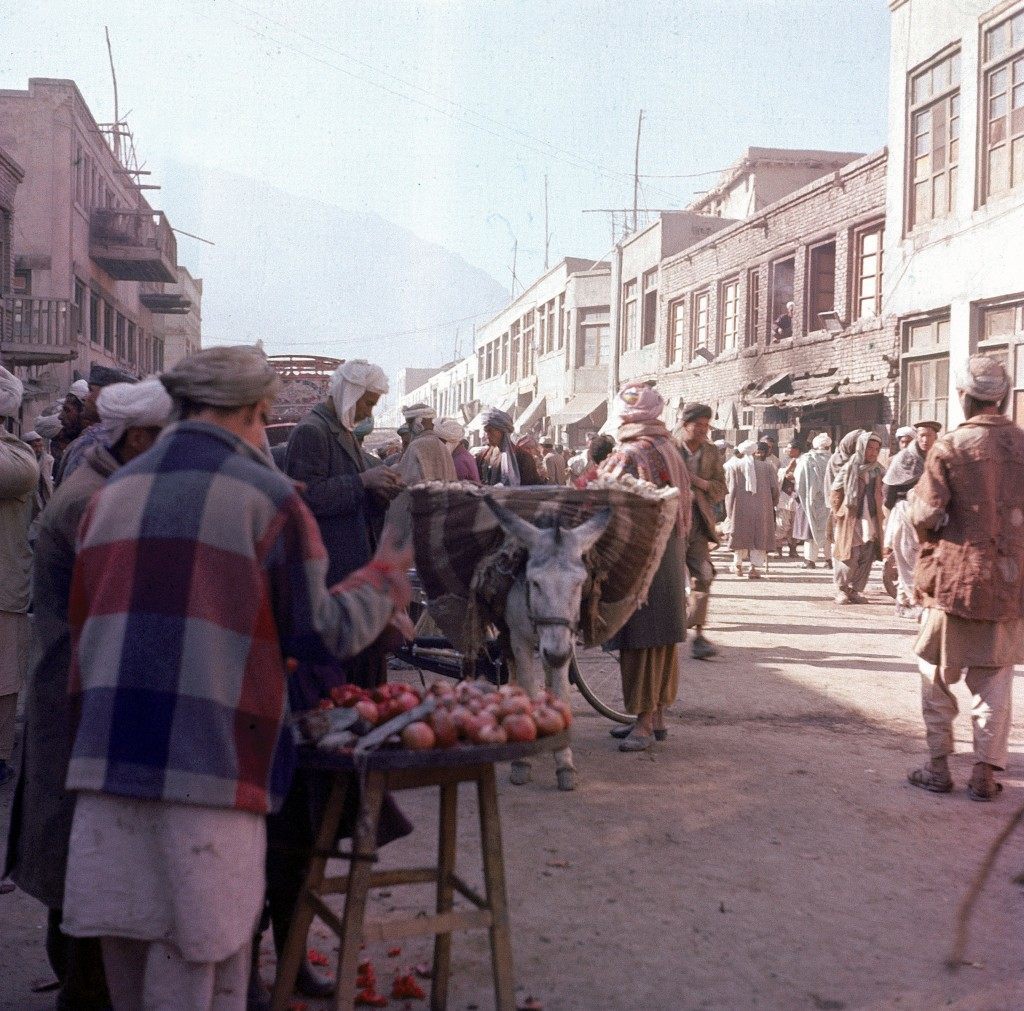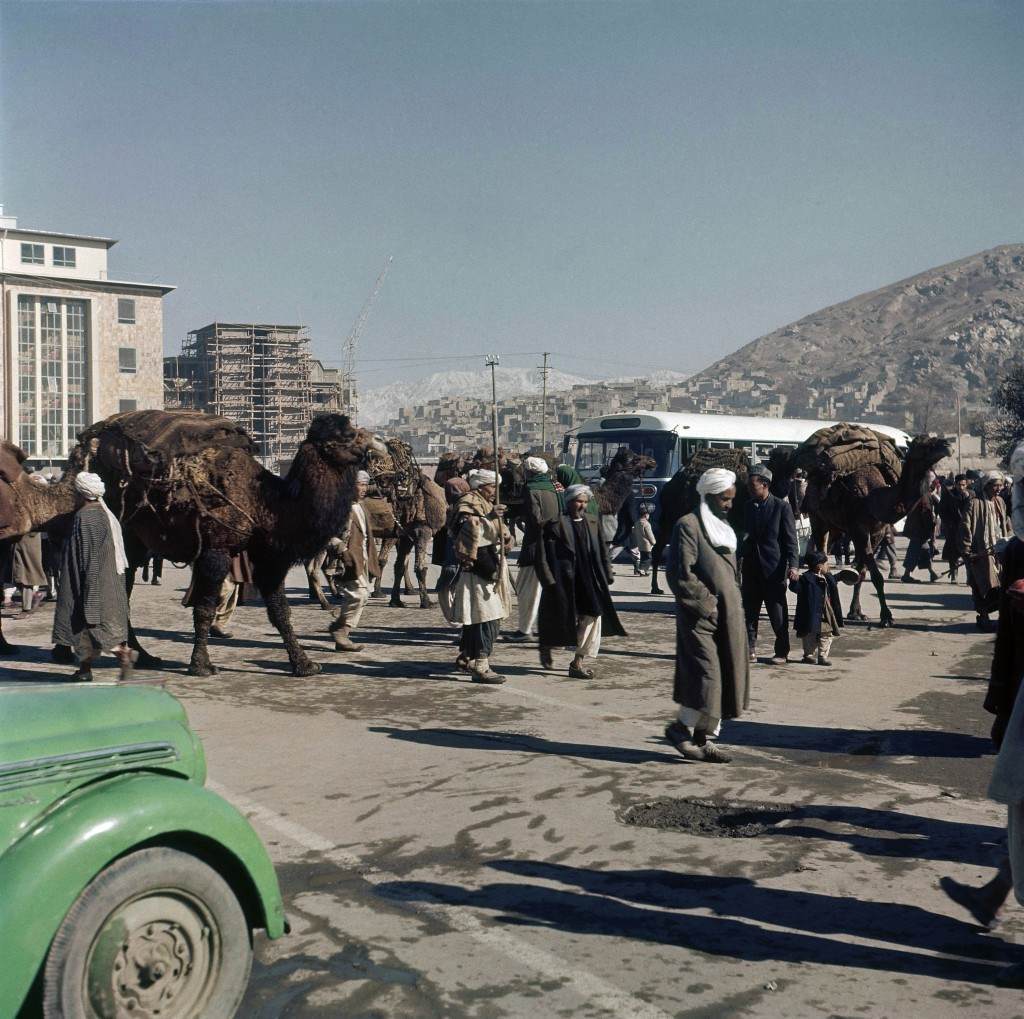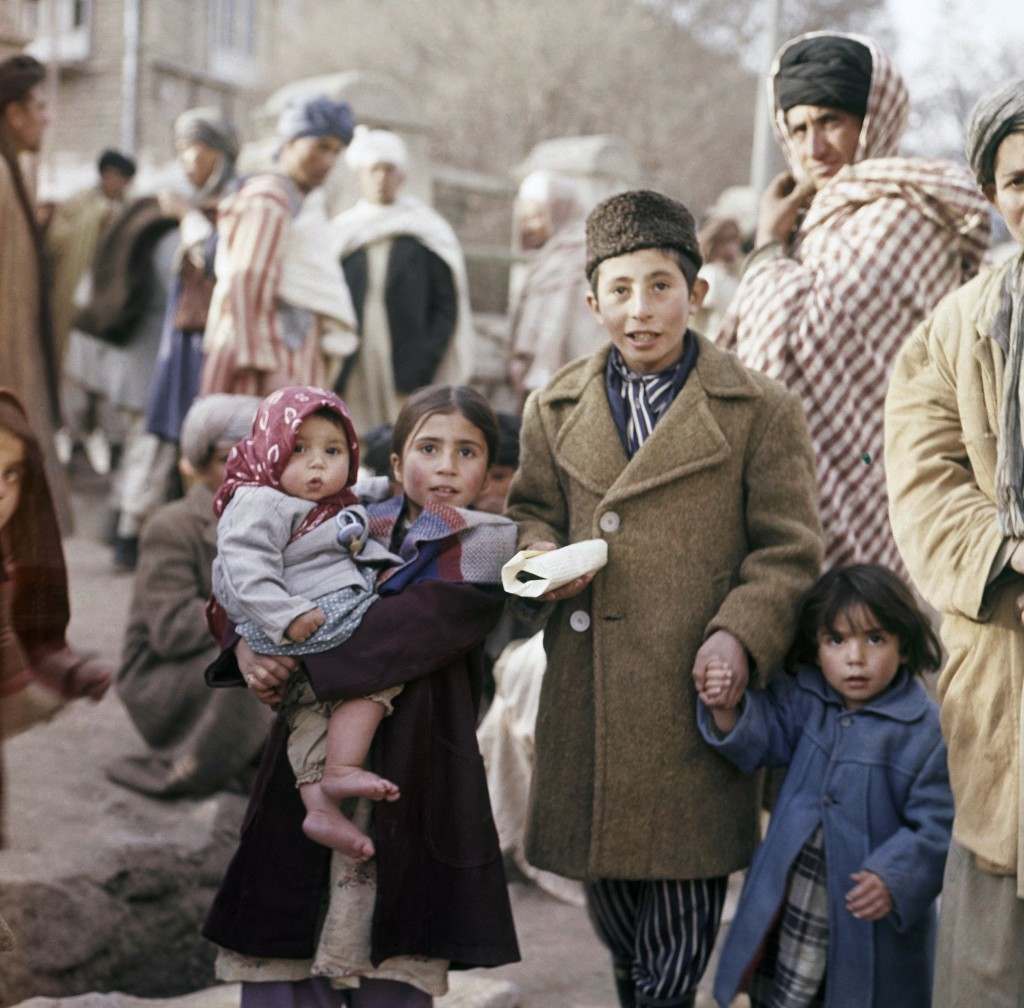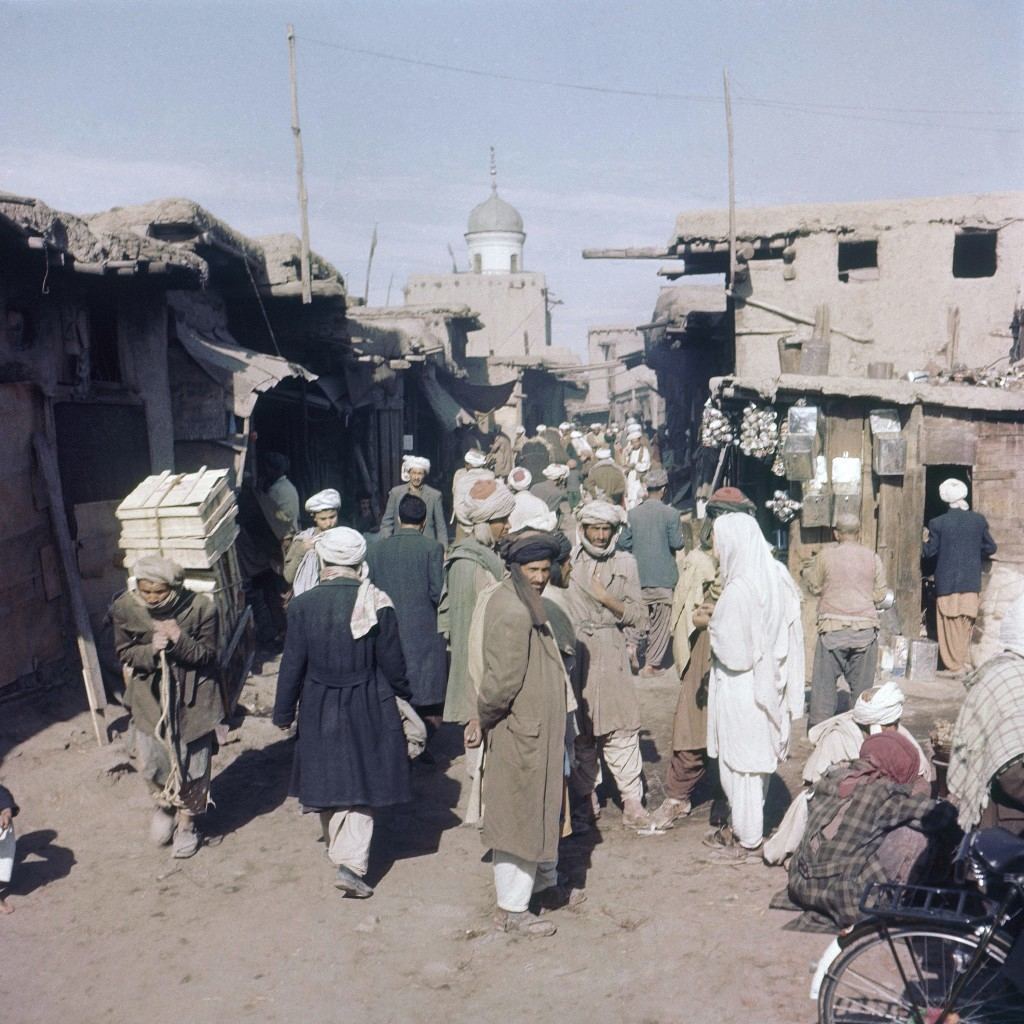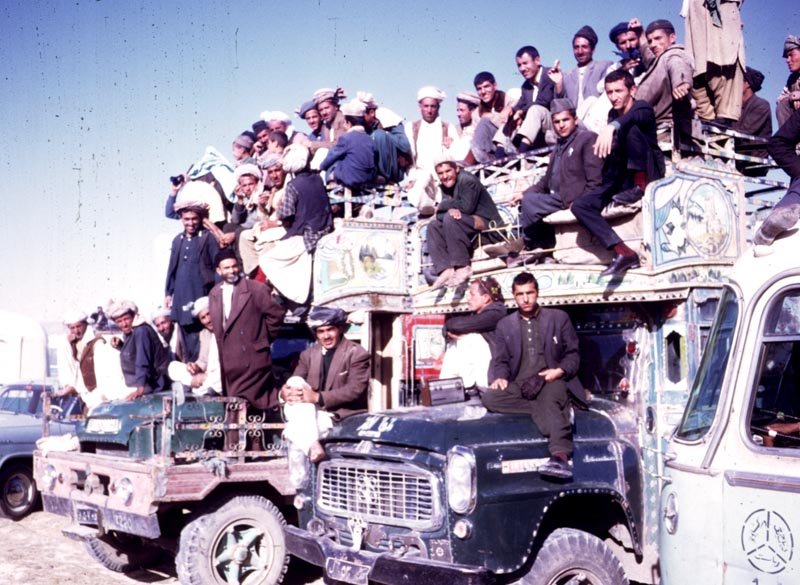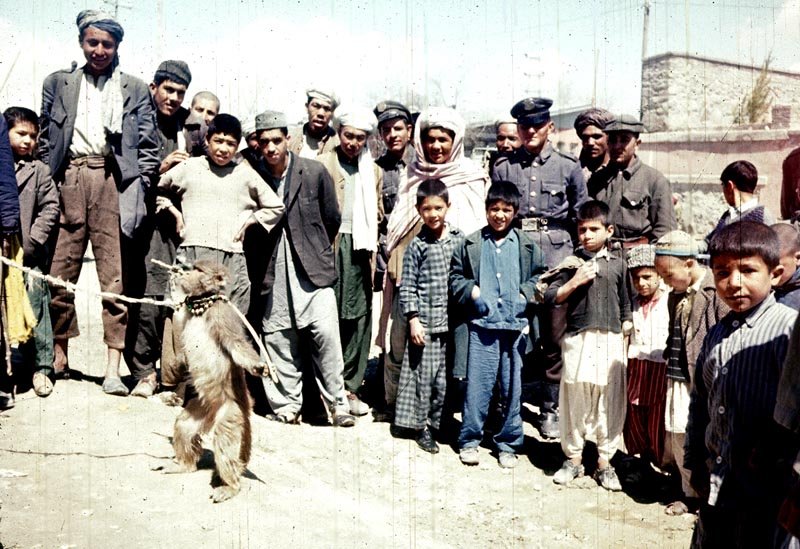IN the mid-20th century, many in Afghanistan were free to embrace Western culture.
The U.S. and Soviet Union both wanted to control in Afghanistan during the Cold War, seeking influence with money and machinery. The people were being wooed.
Life was hard. But things were peaceful. And then it all changed…
The Associated Press’s Henry S. Bradsher and Henry Burroughs recorded life in Kabul in the 1960s, in color.
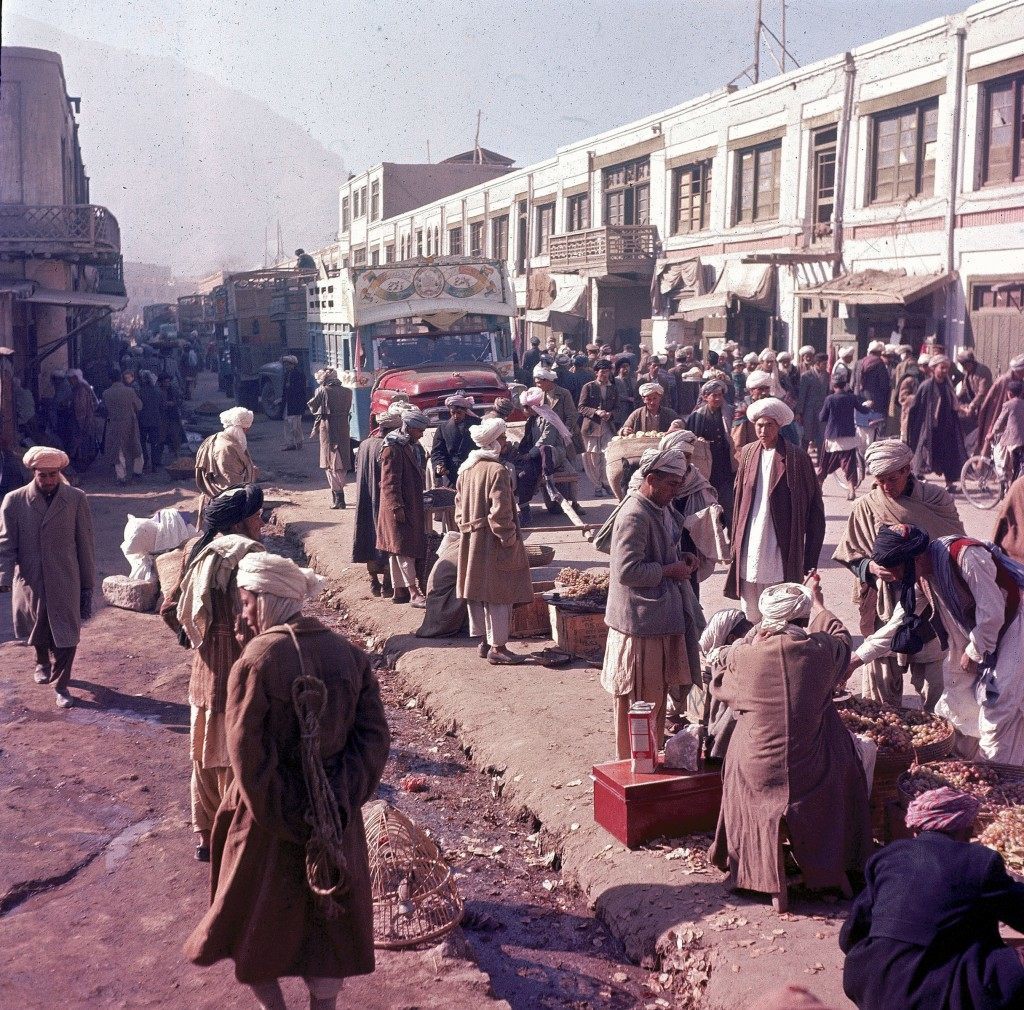
TThis general view shows roadside vendors and men strolling as a painted truck makes its way through the busy street in Kabul, Afghanistan, Nov. 1961. (AP Photo/Henry S. Bradsher)
Ref #: PA.8689944
Date: 01/11/1961
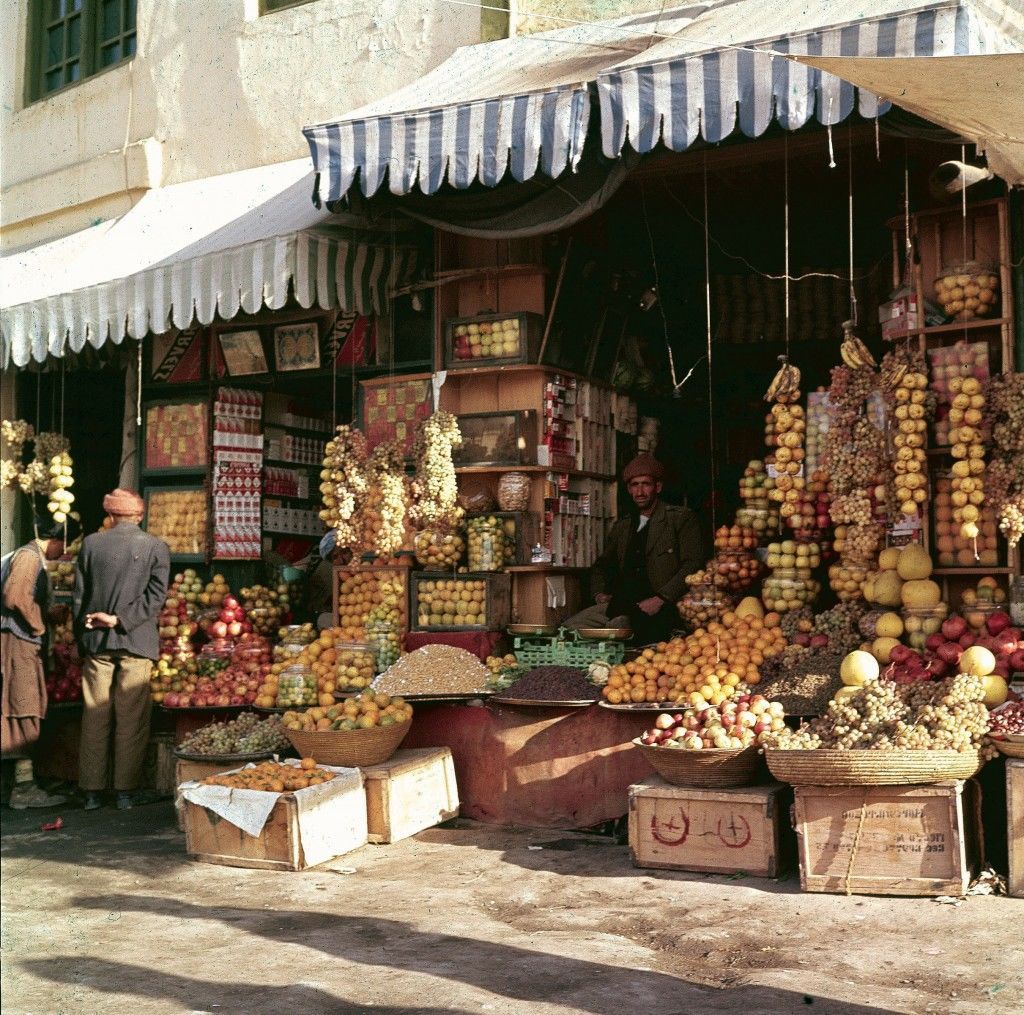
This view shows a shopfront display of fruits and nuts in Kabul, Afghanistan, Nov. 1961. (AP Photo/Henry S. Bradsher)
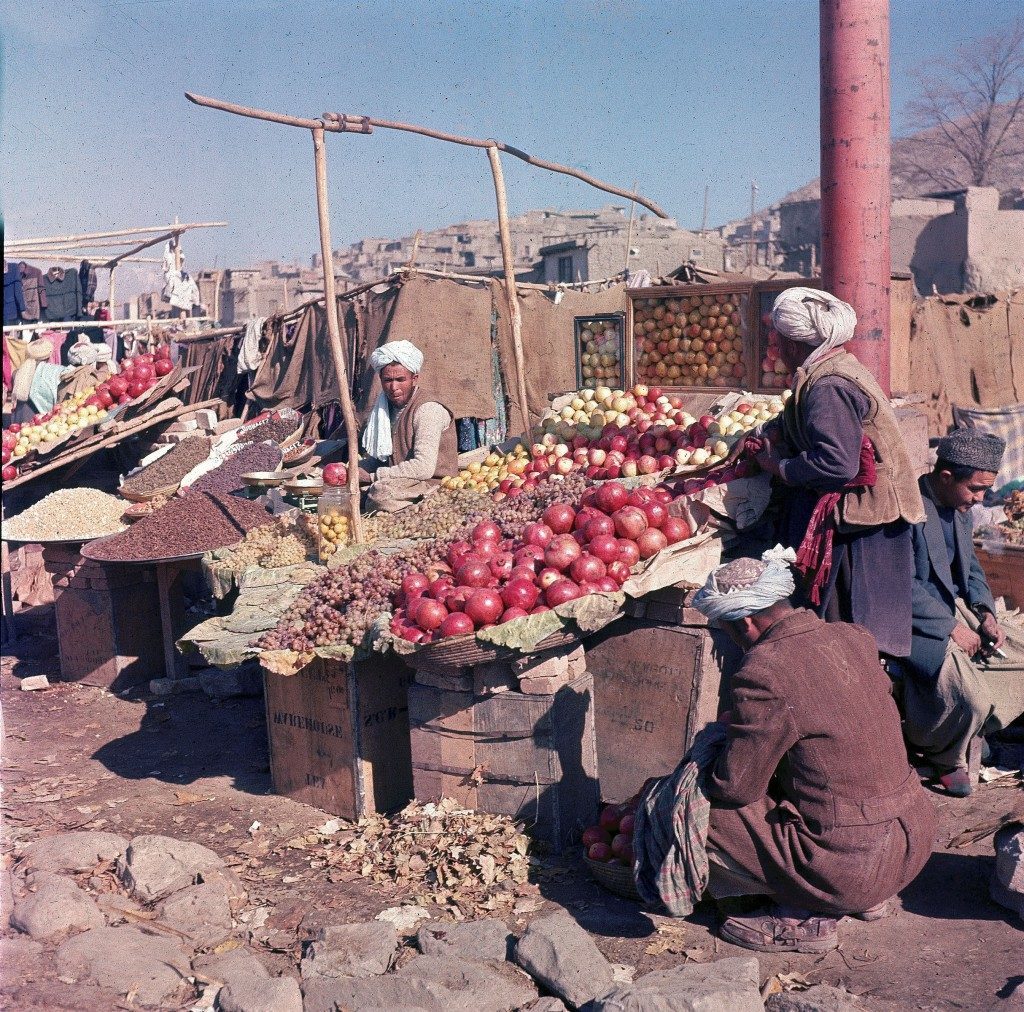
Vendors selling various fuits and nuts are shown at an outdoor market in Kabul, Afghanistan, Nov. 1961. (AP Photo/Henry S. Bradsher)
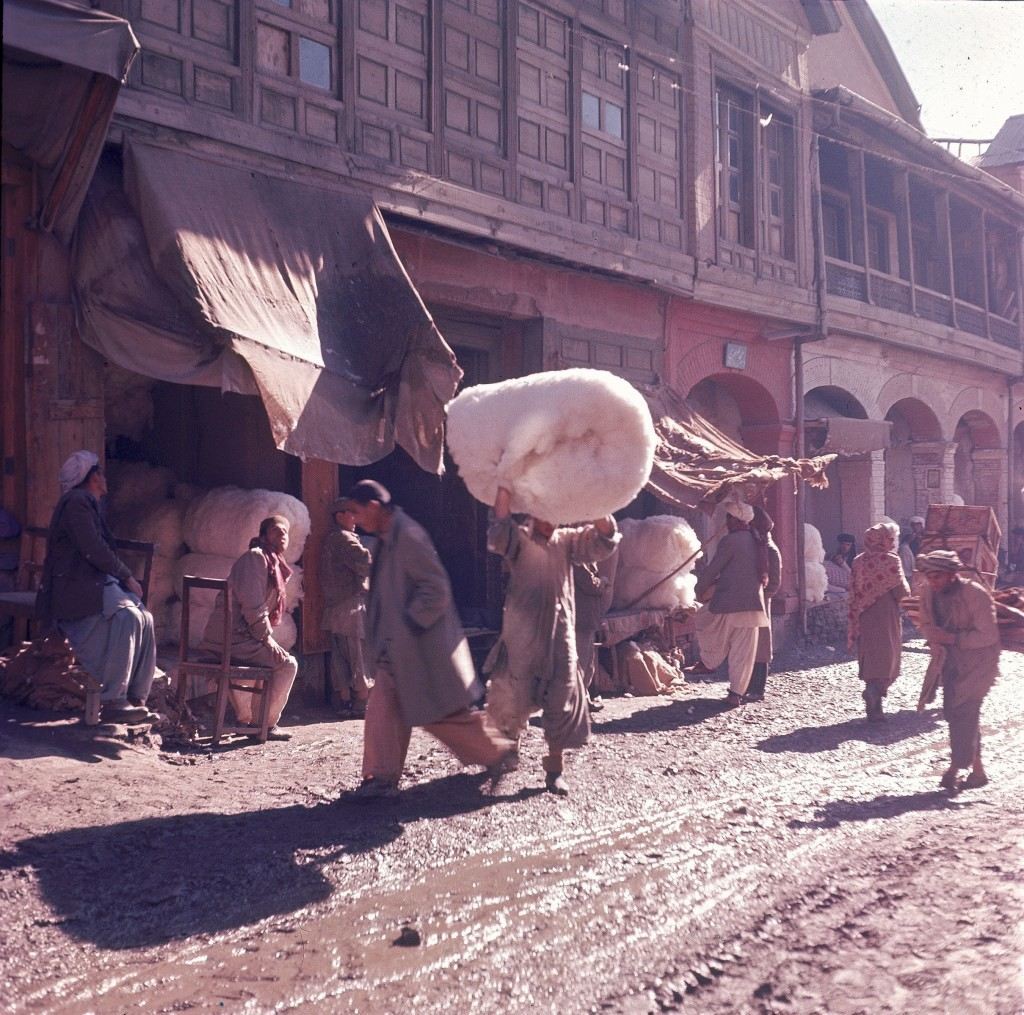
A man carries a bundle of cotton on his head on a muddy street in Kabul, Afghanistan, Nov. 1961. (AP Photo/Henry S. Bradsher)
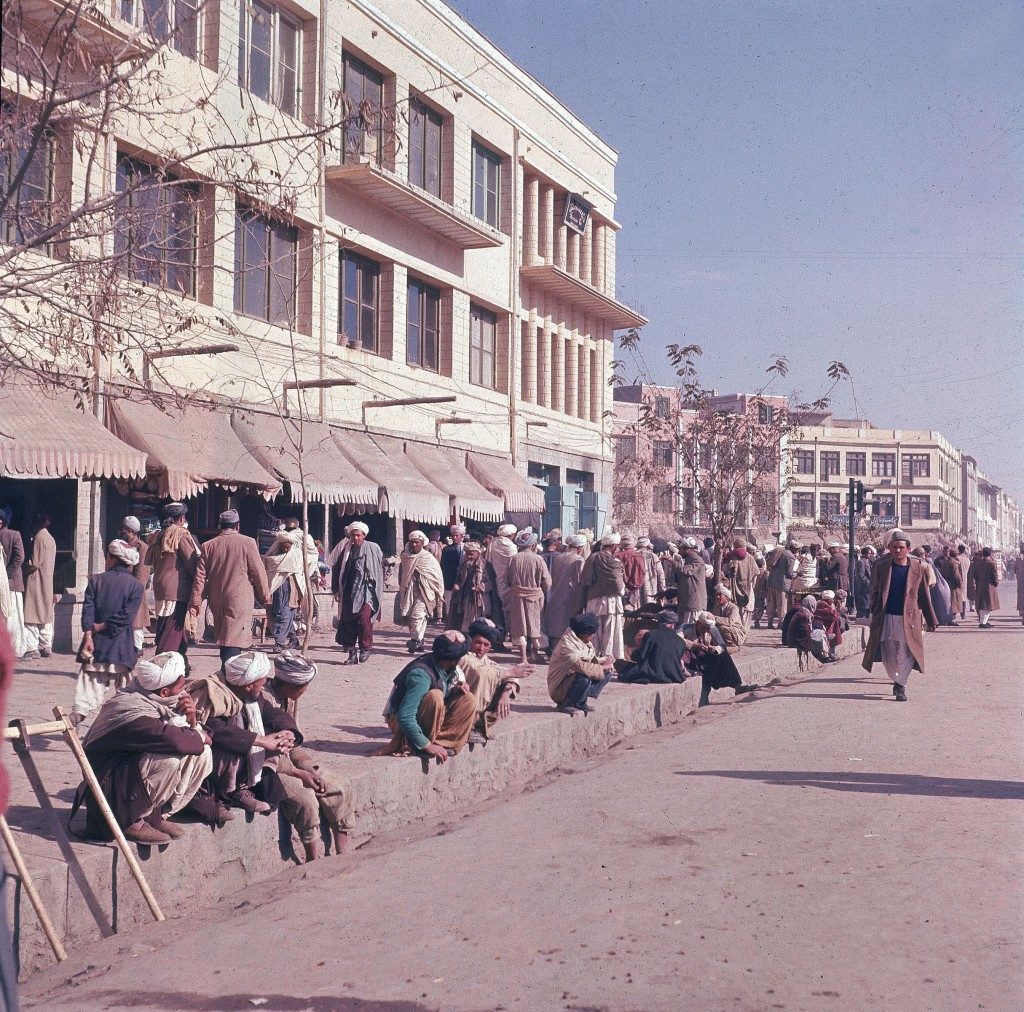
This is a general view of a busy sidewalk in Kabul, capital city of Afghanistan, in Nov. 1961. (AP Photo/Henry S. Bradsher)
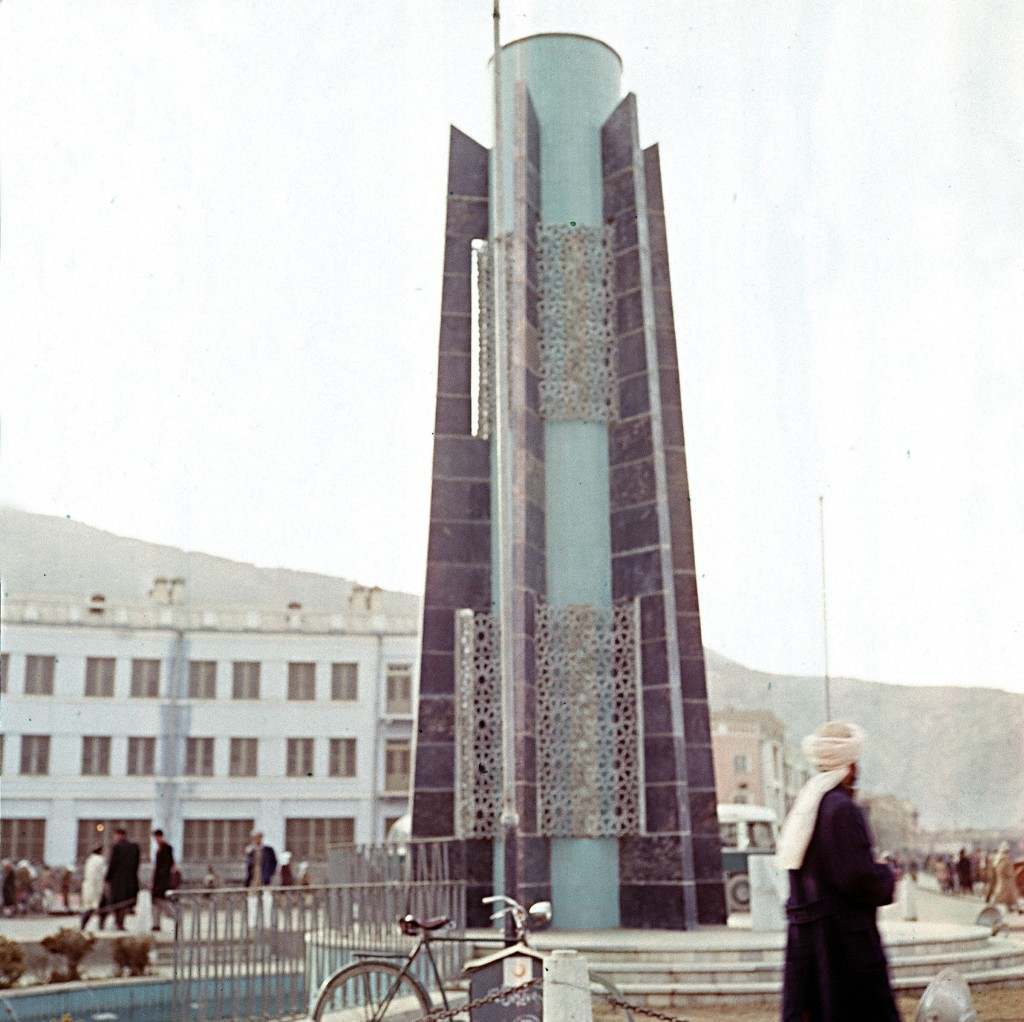
This is a view of a monument in Kabul, capital city of Afghanistan, in Nov. 1961. (AP Photo/Henry S. Bradsher)
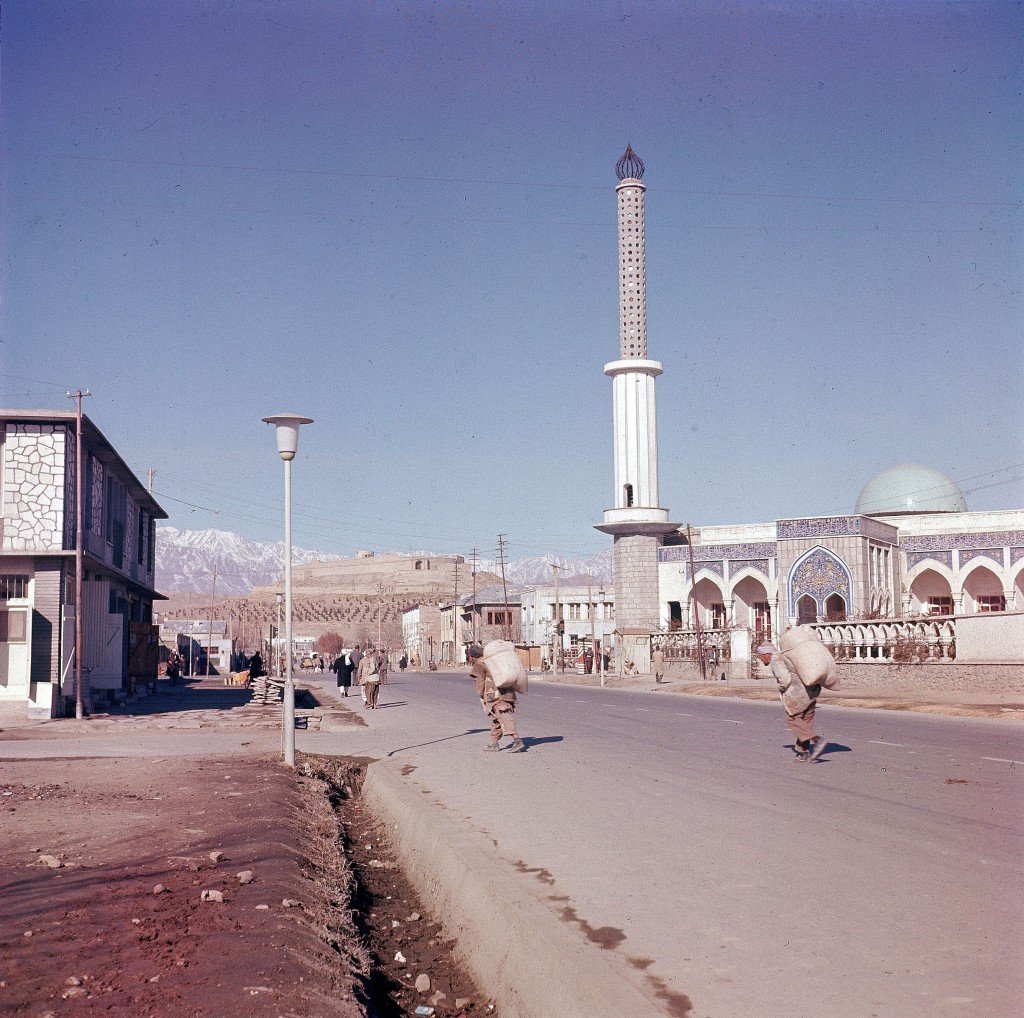
This is a general view of one of the new mosques erected in the suburb of Kabul, capital city of Afghanistan, in Nov. 1961. (AP Photo/Henry S. Bradsher)

This is a general view of Kabul from the mountain on the south side showing the mud buildings of old quarter in foreground and the new stone buildings in background, in Nov. 1961. Kabul, capital city of Afghanistan, is on the Kabul River at an elevation of about 5900 feet, 1800 meters. (AP Photo/Henry S. Bradsher)
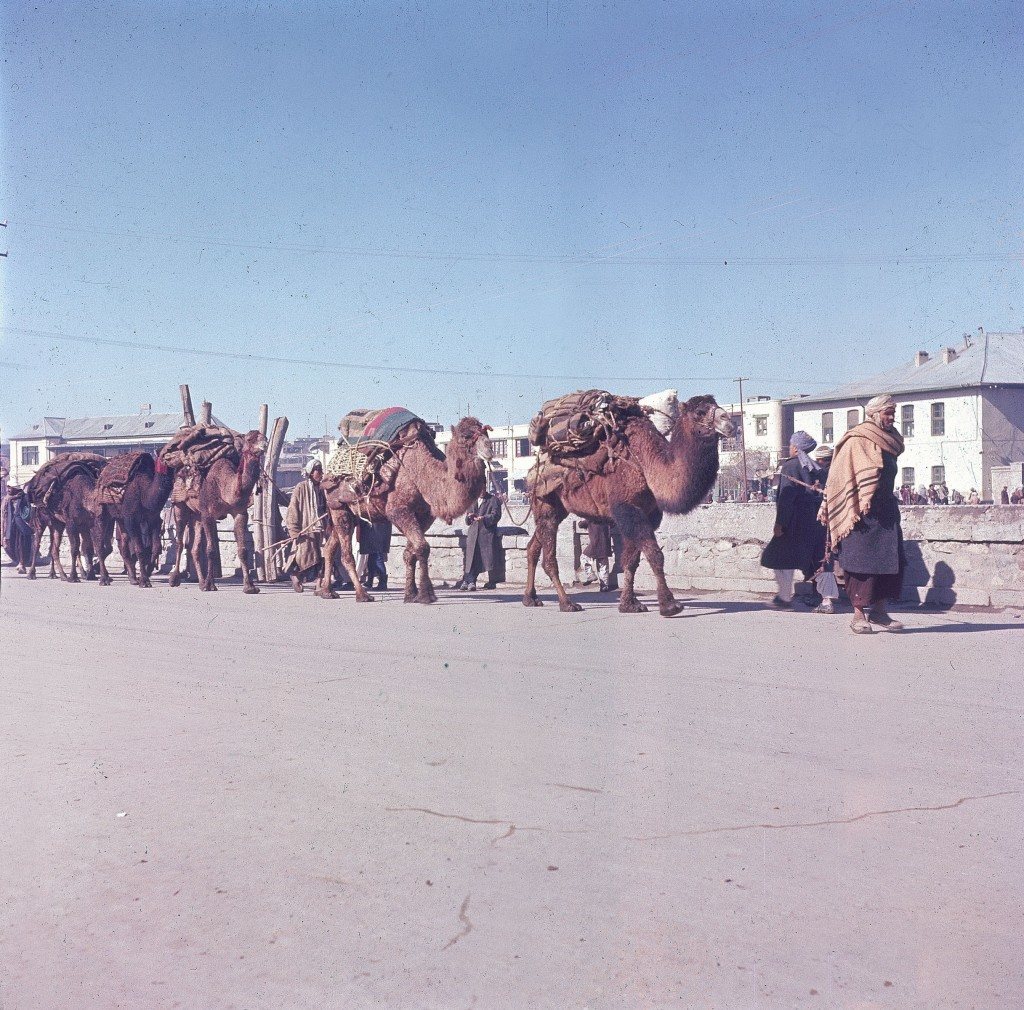
A caraven of camels carry freight along a road in Kabul, Afghanistan, Nov. 1961. (AP Photo/Henry S. Bradsher)

A shopkeeper is shown in a cloth shop where a small American flag is displayed among the rows of folded fabric in the old quarter of Kabul, capital city of Afghanistan – 1960
Not only professional photographers recorded Afghansitan in the 1960s.
The Denver Post writes:
In 1967, Dr. William Podlich took a two-year leave of absence from teaching at Arizona State University and began a stint with UNESCO (United Nations Educational, Scientific and Cultural Organization) to teach in the Higher Teachers College in Kabul, Afghanistan, where he served as the “Expert on Principles of Education.” His wife Margaret and two daughters, Peg and Jan, came with him. Then teenagers, the Podlich sisters attended high school at the American International School of Kabul, which catered to the children of American and other foreigners living and working in the country…
You can view more of his work here.
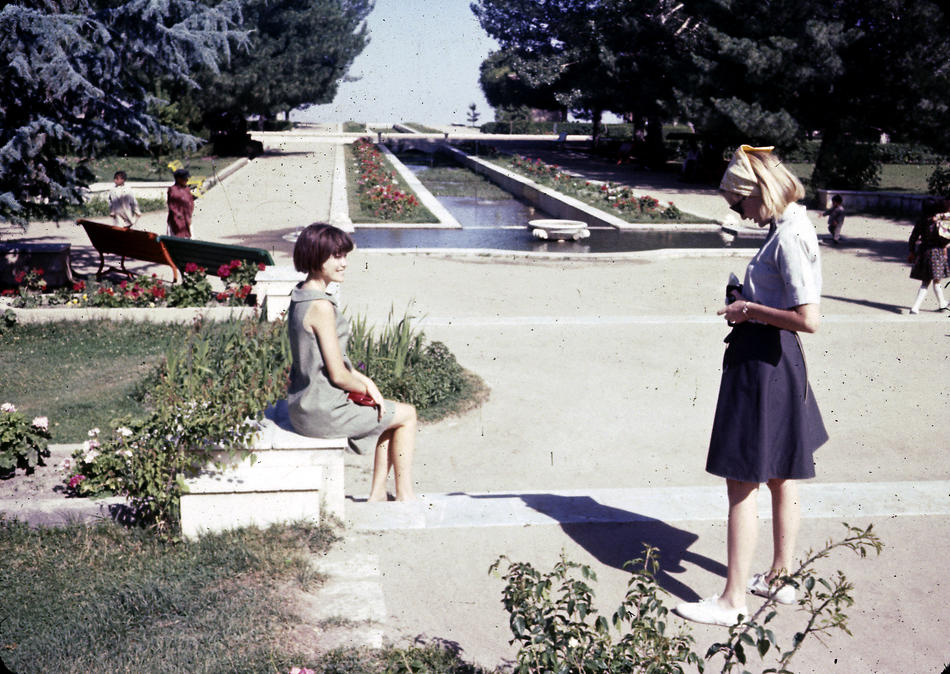
(L-R) Jan and Peg Podlich at Paghman Gardens, which was destroyed during the years of war before the 2001 U.S. invasion of Afghanistan.

Afghan girls coming home from school.
“Afghan girls, as well as boys, were educated up to the high school level, and although girls (and boys) wore uniforms, the girls were not allowed to wear a chadri on their way to secondary school. Able young women attended college, as did the men.” – Peg Podlich
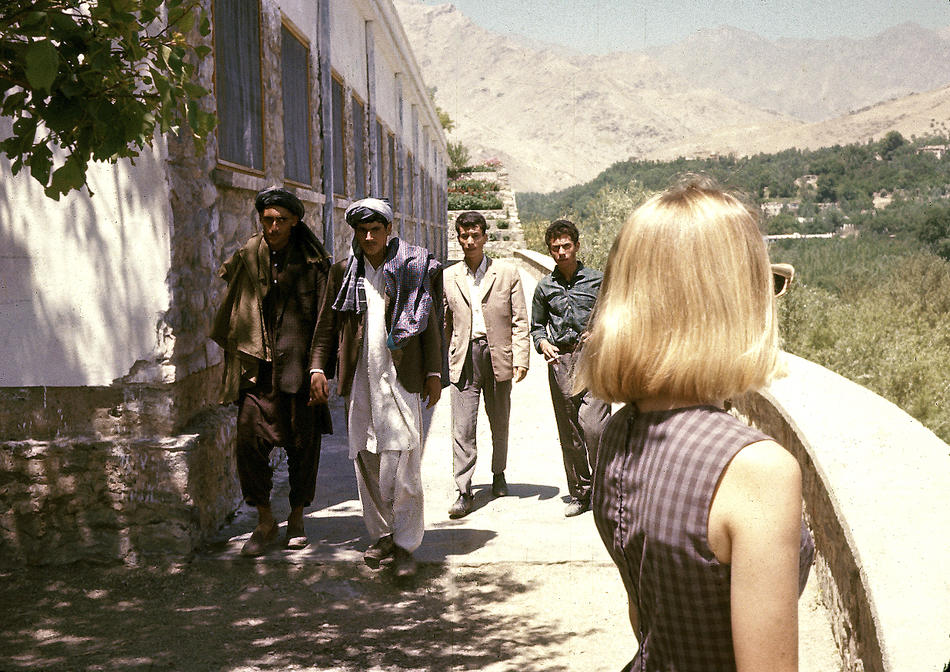
Peg Podlich (Right).
“I grew up in Tempe, AZ, and when my dad offered my younger sister, Jan, and me the chance to go with him and our mother to Afghanistan, I was excited about the opportunity. I would spend my senior year in high school in some exotic country, not in ordinary Tempe… Of course, there were loads of cultural differences between Arizona and Afghanistan, but I had very interesting and entertaining experiences.Ê People always seemed friendly and helpful. ÊI never got into any real difficulties or scrapes, even though I was a fairly clueless teenager! Times were more gentle back then.” – Peg Podlich.

Peg Podlich, in the sun glasses, taking a family trip on a bus going from Kabul, Afghanistan to Peshawar, Pakistan.
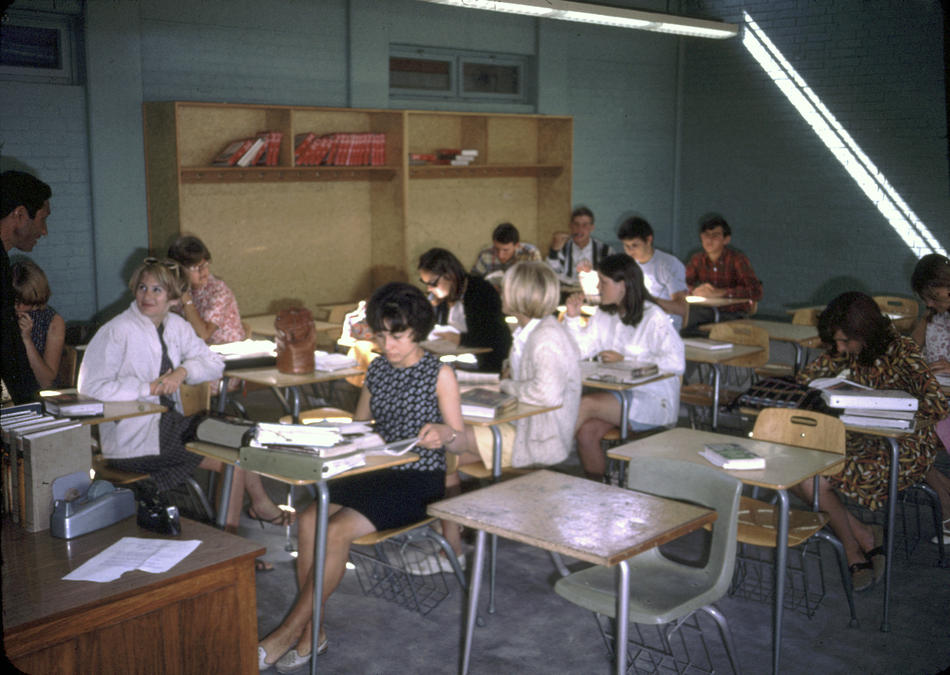
American International School of Kabul (AISK), Senior English class. Peg Podlich is on the left.
“I was in my senior year (my final year) of high school and I attended the American International School of Kabul out on Darul-aman Road.Ê In Tempe, I had walked four blocks to school; in Kabul a school bus stopped outside our home. Jan and I ran out when the driver honked the horn. On the bus, we were supervised by Indian ladies, wearing saris of course, and were driven with about 20 kids back through Kabul, around the hill to the west side of town. ” – Peg Podlich

A Buddha statue in Bamiyan Valley- a UNESCO World Heritage Site. The two largest statues (not pictured here) were destroyed by the Taliban in 2001. “That was a bumpy, rough trip, but I’ll never forget how wide and green the valley was or how monumental those two Buddha statues were, carved into the face of the cliff… The statues were a magnificent sight, even to someone like me, who did not really understand the history or technical achievement of those statues.” – Peg Podlich
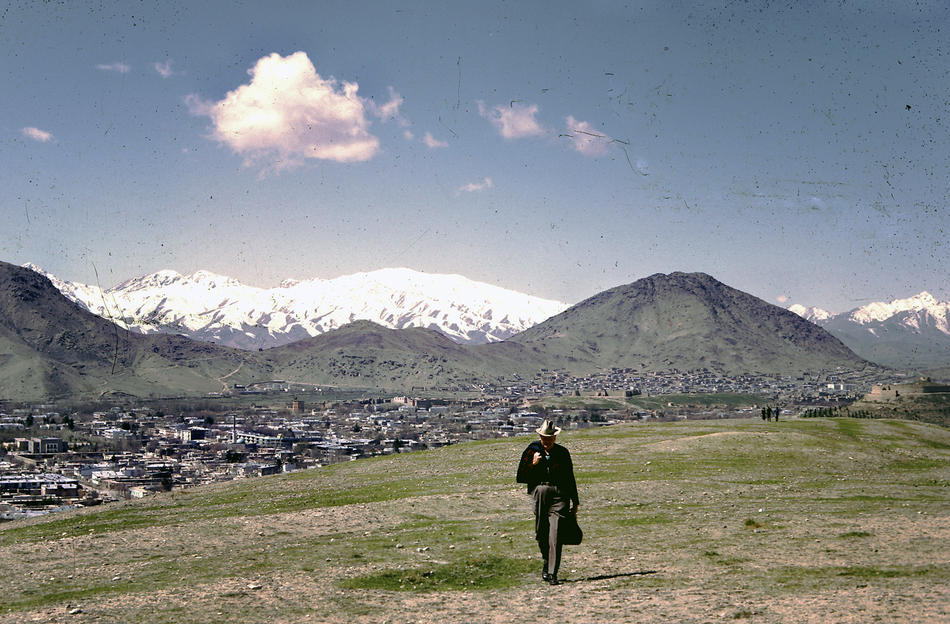
Dr. Bill Podlich on a hillside in Kabul.
“My dad was a professor of Elementary Education, specializing in teaching Social Studies, at Arizona State University in Tempe, Arizona from 1949 until he retired in 1981. He had always said that since he had served in WWII (he trained soldiers against chemical warfare), he wanted to serve in the cause of peace. In 1967, he was hired by UNESCO as an Expert on Principles of Education, for a two-year stint in Kabul, Afghanistan at the Higher TeachersÕ College. Throughout his adult life, because he was interested in social studies, whenever he traveled around (in Arizona, to Mexico and other places), he continued to take pictures. In Afghanistan he took half-frame color slides (on Kodachrome), and I believe he used a small Olympus camera.” – Peg Podlich.

Parking lot of the American International School of Kabul. The school no longer exists, although alumni stay in touch through Facebook and hold reunions every few years at different cities around the U.S. The next reunion will be held in Boston in 2013.
“AISK’s last year was 1979, so the school had a 20 year history. AISK was located on the same campus that currently houses the American University of Afghanistan (on Darul-aman Rd in west Kabul). In 1967-68, there were about 250 students attending AISK and 18 graduating seniors.” – Peg Podlich
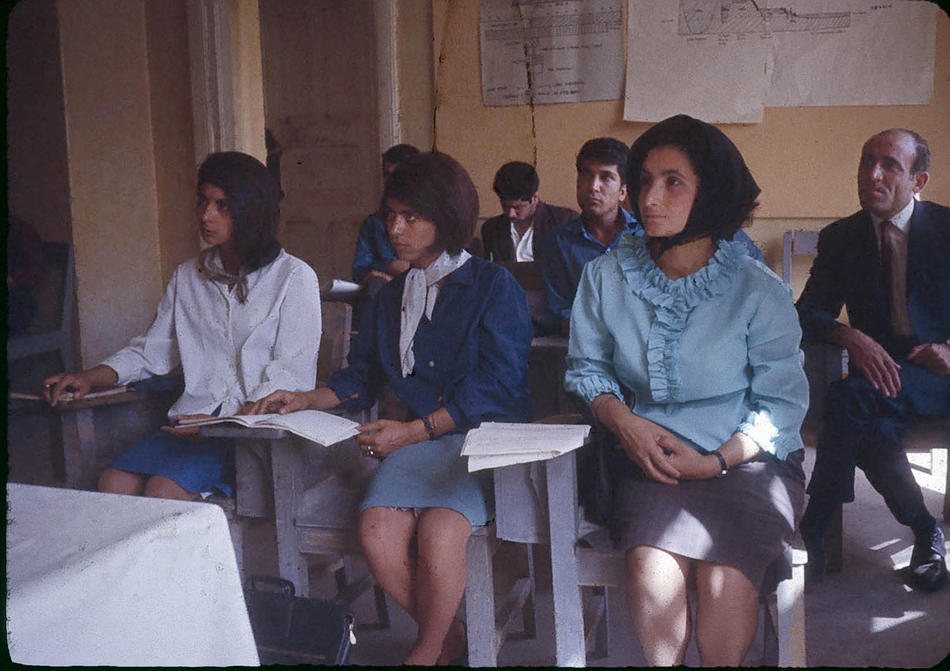
Students at the Higher Teachers College of Kabul where Dr. Podlich, the photographer, worked and taught for two year’s with the United Nations Educational, Scientific and Cultural Organization.
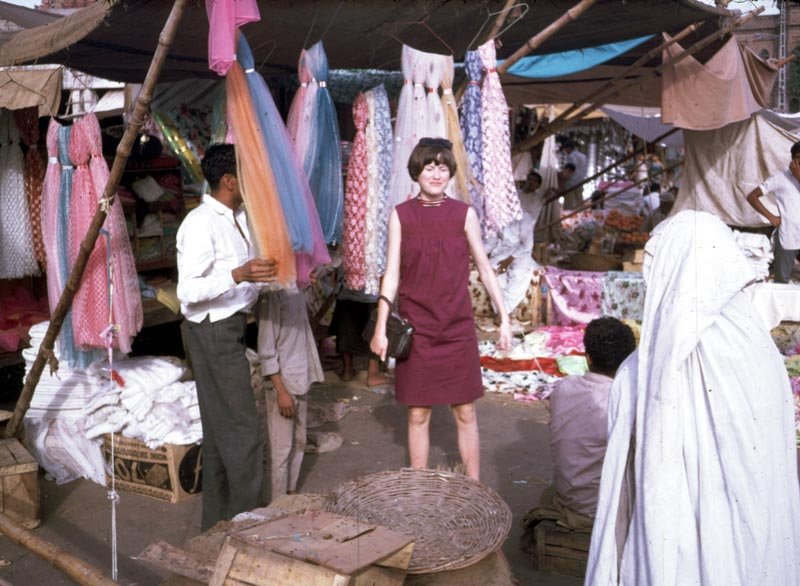
Jan Podlich on a shopping trip in Istalif. Jan in a short, sleeveless dress and the woman to the right in a chadri (burka). “We arrived in Kabul one sunshiny morning in June… My dad met us and was able to whisk us through the customs. We proceeded into Kabul in a UN ‘kombi’ (kind of an old school SUV). I was tired, but I can remember being amazed at the sight of colorful (dark blue, green and maroon) ghosts that were wafting along the side of the road. My dad explained there were women underneath those chadris, and that some women had to wear them out in public. We never called the garments burkas… Depending on the country, women practicing purdah (Islamic custom requiring women to cover up) wear different styles of coverings, which have different names.” – Peg Podlich
Would you like to support Flashbak?
Please consider making a donation to our site. We don't want to rely on ads to bring you the best of visual culture. You can also support us by signing up to our Mailing List. And you can also follow us on Facebook, Instagram and Twitter. For great art and culture delivered to your door, visit our shop.


